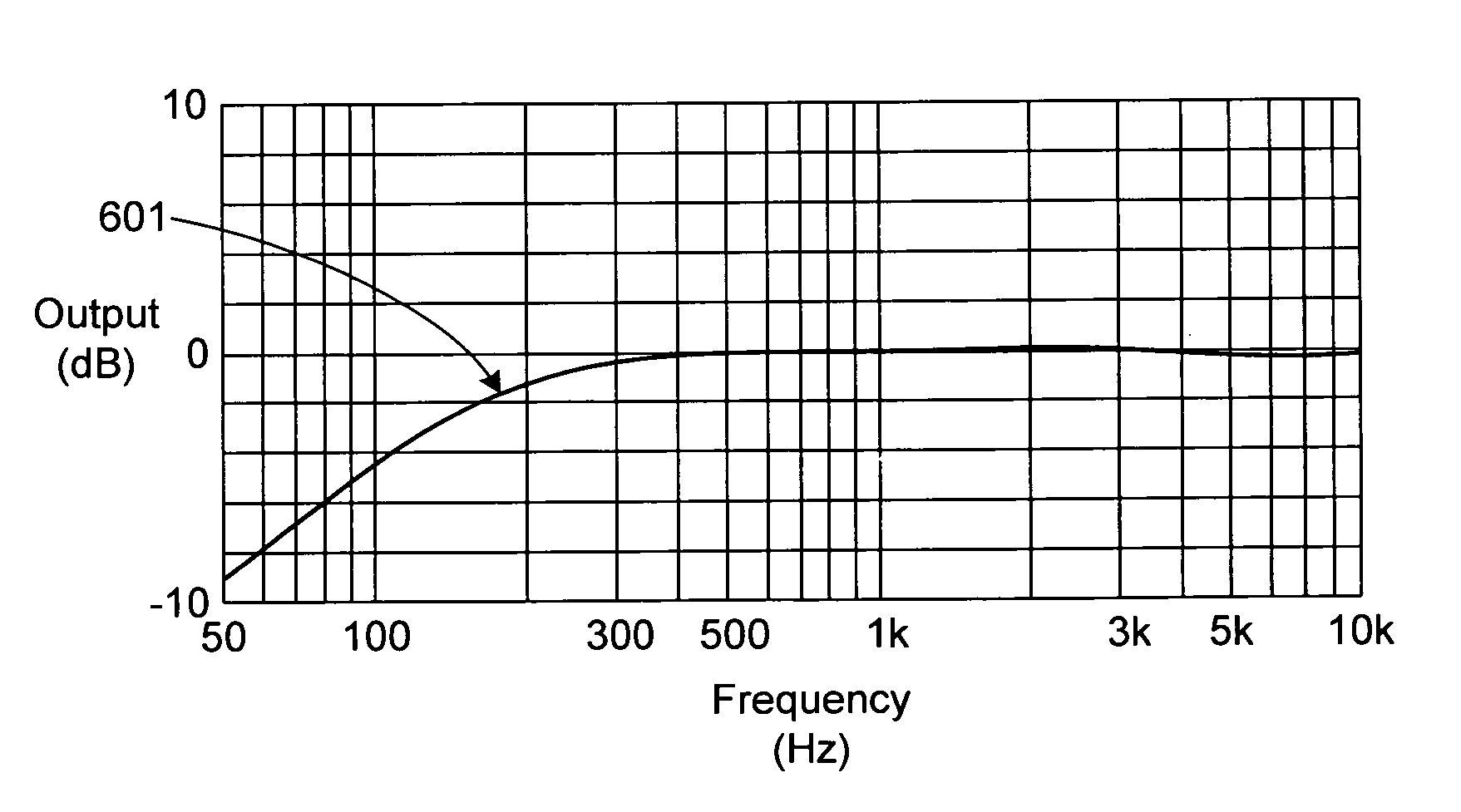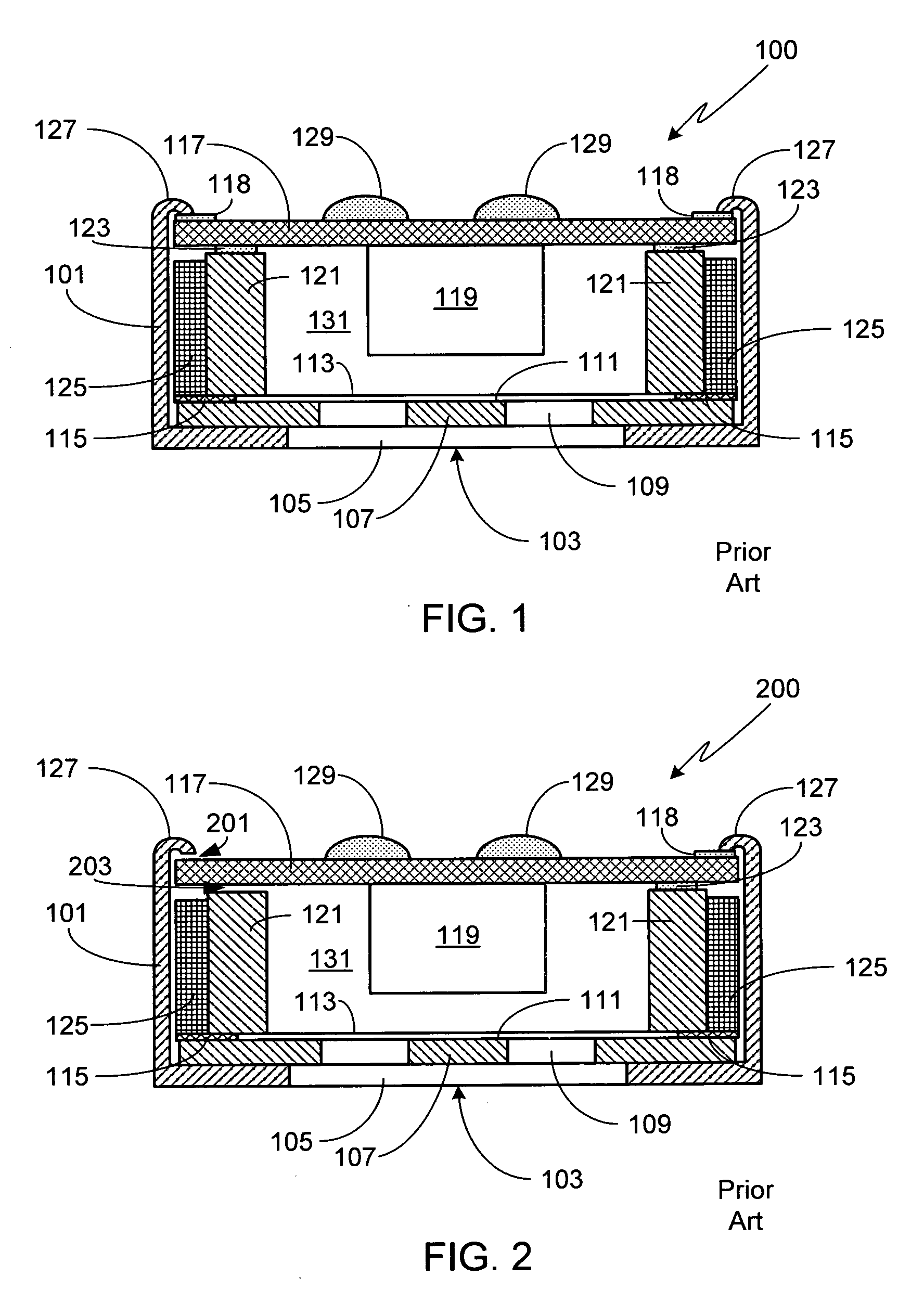Controlled leakage omnidirectional electret condenser microphone element
a condenser microphone and omnidirectional technology, applied in the field of microphones, can solve the problems of normal component mismatch, reduced signal quality, and increased sensitivity to background ambient noise, and achieve the effect of improving the low frequency background ambient acoustic noise rejection
- Summary
- Abstract
- Description
- Claims
- Application Information
AI Technical Summary
Benefits of technology
Problems solved by technology
Method used
Image
Examples
Embodiment Construction
[0028]The inventors have found that it is possible to achieve many of the benefits associated with a conventional omnidirectional electret condenser microphone element while improving upon its background ambient noise rejection, more specifically improving the signal-to-noise ratio at low frequencies. The inventors have found it advantageous to roll-off the low frequency response, preferably by at least 2.0 dB, and more preferably by at least 3.0 dB, between an upper frequency of 100 Hz and a lower frequency of 300 Hz. This audio band was selected since the low frequency portion of the voice signal, while easily corrupted by acoustical noise, carries very little of the audio intelligibility of speech. For example, high-pass filtering a typical speech signal above 300 Hz will reduce the intelligibility by only about 3%. It should be appreciated, however, that the method described in detail below can be used to adjust the low frequency roll-off within other audio bands.
[0029]In order ...
PUM
 Login to View More
Login to View More Abstract
Description
Claims
Application Information
 Login to View More
Login to View More - R&D
- Intellectual Property
- Life Sciences
- Materials
- Tech Scout
- Unparalleled Data Quality
- Higher Quality Content
- 60% Fewer Hallucinations
Browse by: Latest US Patents, China's latest patents, Technical Efficacy Thesaurus, Application Domain, Technology Topic, Popular Technical Reports.
© 2025 PatSnap. All rights reserved.Legal|Privacy policy|Modern Slavery Act Transparency Statement|Sitemap|About US| Contact US: help@patsnap.com



